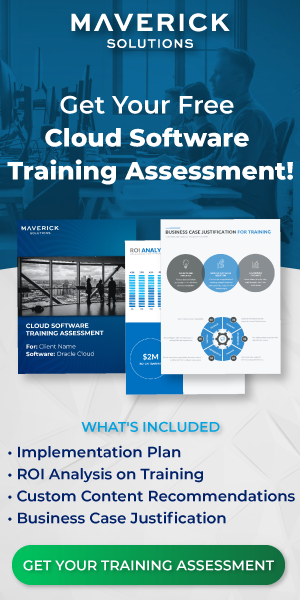Unprecedented. How many times have we heard that word applied to the Covid-19 pandemic by now?
And with reason. In the lifetimes of most of us, anyway, Covid stands as a global health crisis of truly unprecedented proportions, exacting a human and economic toll world-wide such as hasn’t been seen in generations.
And yet, as the pandemic has illustrated all too clearly, the unprecedented happens, to say nothing of the merely unexpected.
That poses a challenge (dare we say, an unprecedented challenge) to everyone from national governments to the corner mom-and-pop grocery who continue to rely primarily on historical data—that is, precedent—to make business decisions in the here-and-now and plan for the financial future.
While forward-thinking financial advisers like Steve Player (Twitter handle: Mr. Forecast) have been calling for years for companies to shift from a traditional budgeting and forecasting model based on historical trends toward a more adaptive approach, the pandemic has underscored as never before the wisdom of such counsel, driving home the need for companies (and governments) to be able to adjust plans quickly in the face of unforeseen events and plan ahead to meet such events in the future.
Real-time finance
So, what might such an adaptive approach look like?
In a recent survey of major U.S. and European companies, Accenture found that these companies’ leaders were nearly unanimous in naming the ability to conduct financial analysis and scenario planning in real time—what Accenture dubs real-time finance—as crucial to meeting present and future challenges and navigating uncertainty.
In a recent article for Strategic Finance Magazine, forecasting professionals Brandon Metcalf and Pradeep Gupta provide a fuller picture of what’s entailed in implementing such an approach.
Metcalf and Gupta outline the following elements of a real-time financial framework:
- Dynamic planning
- Comprehensive data integration
- Cross-departmental collaboration
Let’s take a look at each of these.
Dynamic planning
As Covid made glaringly obvious, the best laid financial plans can be upended literally overnight by unforeseeable events. As more and more countries went into lockdown last spring, bringing their economies to a grinding halt, companies found themselves needing to respond, and respond quickly, to the sudden change in circumstances.
Yet as Metcalf and Gupta point out, implementing changes to a company’s annual budget (let alone to its operations) can take months, underscoring the limitations of the traditional annual planning model.
To overcome such limitations, companies need a more flexible, more dynamic financial planning framework, one that allows them to make changes at a moment’s notice in response to changing circumstances.
Practically speaking, that means moving away from a reliance on annual budgets toward rolling forecasts, which allow both for ongoing planning across fiscal years and, crucially, for quick course correction when changes are needed.
It also means empowering finance teams to quickly model a range of scenarios based on real-time data, so that, when the unexpected happens, leaders can make informed decisions about how best to respond.
Comprehensive data integration
Models, of course, are only as good as the data they’re based on. To enable better decision-making, Metcalf and Gupta call on organizations to integrate financial and operational data, making it easier for finance teams to draw on the full range of a company’s data for planning purposes, and giving those on the operations side greater insight into planned operating budgets and financial targets.
Cross-departmental collaboration
To enable such integration, companies should implement cross-departmental workflows that make it easier for employees throughout the organization to contribute to data reporting and access its results.
As Metcalf and Gupta point out, such collaboration can not only improve the efficiency of data collection and sharing, making it easier for finance teams to access comprehensive, granular information for reporting and modeling.
It can also empower employees by giving them greater insight into the company’s financial goals and how they might contribute to them.
Budgeting and Forecasting in Oracle Cloud EPM
Of course, implementing any one of these changes at a mid-to-large sized organization may represent a considerable undertaking — never mind tackling all three.
So, how do companies realize these objectives and put in place a real-time financial model?
While Metcalf and Gupta acknowledge the loftiness of the task, they provide a simple answer: invest in the right technology.
Oracle Cloud Enterprise Performance Management (EPM) offers just such a technology.
What is Oracle Cloud EPM?
As we’ve covered before in this space, Enterprise Performance Management is a comprehensive solution for monitoring, analyzing, and managing your company’s financial performance, from planning and forecasting to financial close and consolidation.
Both Standard and Enterprise versions of EPM include the Oracle Planning Cloud, which brings together planning and budgeting solutions for corporate and project finances, workforce, and capital investments, along with strategic modeling capabilities for long-term planning.
It’s primarily in Planning Cloud that companies will find the budgeting and forecasting capabilities necessary to implement and conduct real-time finance.
Let’s take a look some of those capabilities.
Rolling forecasts
As we’ve mentioned, rolling forecasts are an important tool for dynamic planning, allowing companies the flexibility both to plan across fiscal years (and hence farther into to future) and to adjust course quickly in response to changing circumstances.
In EPM’s Financials module, planners can use rolling forecasts to conduct continuous planning based on real-time data.
Planners can set forecasting to a weekly, monthly, or quarterly cadence, allowing for closer monitoring of financial performance than with the traditional annual planning cycle, where quarterly assessments are the norm.
In turn, finance teams can offer more frequent updates to the C-suite, ensuring that corporate leaders have up-to-date information when making business decisions.
Scenario modeling
If rolling forecasting offers companies greater flexibility in dealing with changes, scenario modeling can help them decide how best to deal with those changes when they occur.
While modeling via spreadsheet has long been the norm, that approach can be complicated, time-consuming, and prone to errors that result in less-than-accurate data—all problems when it comes to responding swiftly and effectively to change.
EPM includes a built-in scenario modeling tool that eliminates the need for spreadsheets.
Using built-in financial intelligence, the scenario modeling feature frees finance teams from having to build models from the ground up, making it exponentially easier to quickly model myriad what-if scenarios in response to on-the-ground changes or as part of long-term contingency planning.
In the midst of a pandemic, that increased efficiency could mean the difference between getting out ahead of troubling trends or getting stuck in them.
In EPM’s Strategic Modeling work area, users will find ready-to-use modeling capabilities to run what-if scenarios and conduct long-term forecasting and strategic planning.
In all cases, planners can set financial targets, conduct impact analysis to examine potential effects of business decisions, and present their findings in reports that focus on key information.
Integrated data
EPM’s built-in financial intelligence can draw on the full range of a company’s financial data, from capital structure to taxes, providing a comprehensive picture of financial performance.
Just as important, EPM financial intelligence enables companies to integrate financial and operational data, ensuring that financial planning doesn’t take place in a vacuum.
For instance, you can configure EPM so that planners using the Financials module can access Workforce employee data and expenses for financial performance analysis or strategic planning.
Similarly, you can integrate EPM’s Workforce and Projects modules to give workforce planners access to employee utilization data across projects or by individual project.
Users of Oracle Profitability and Cost Management (included in Enterprise EPM) will find similarly extensive access to data.
As part of profitability and cost analysis, for instance, users can access operational data such as product and manufacturing information to calculate costs or model what-if scenarios at a granular level.
Integrated applications
We’ve mentioned how EPM’s integrated modules allow for data sharing across workstreams.
The same capability links EPM with other Oracle Cloud products to provide comprehensive data integration. EPM’s built-in integration with Oracle Human Capital Management (HCM) Cloud, for instance, makes it easier for an organization’s Human Resources department to collaborate with the finance team to ensure that your strategic workforce planning aligns with your financial goals.
In turn, finance teams can use EPM’s delivered driver-based planning, among others features, to plan for labor-related expenses and model the impact of workforce planning decisions on the company’s bottom line.
Still have questions?
We’ve covered how EPM can help your organization implement a real-time financial framework. You can learn more about how to implement and use Oracle EPM to manage your organization’s financial performance with ENGAGE, Maverick Solutions’ comprehensive, subscription-based training offering for Oracle Cloud applications.
ENGAGE is both a learning platform (ENGAGE Learn) and a GPS (ENGAGE Live) for your Oracle Cloud software.
ENGAGE Learn contains thousands of training resources and interactive training simulations that walk users step-by-step through complex business processes. ENGAGE Live is accessible in the live Oracle application and guides users in real time with any issues in the system.
Offering fully customizable Training as a Service (TaaS), Maverick Solutions can provide your organization:
- Training available anytime, anywhere
- Content that’s always current with software updates
- Interactive simulations
- Learning consultation to determine your organization’s training needs
To learn more, speak with one of our training experts today!
Note: This article was written for Oracle release 21C. Due to the nature of Cloud software and updates, this article may no longer be accurate. If you would like access to the most up-to-date version, please reach out to our team to learn more.





